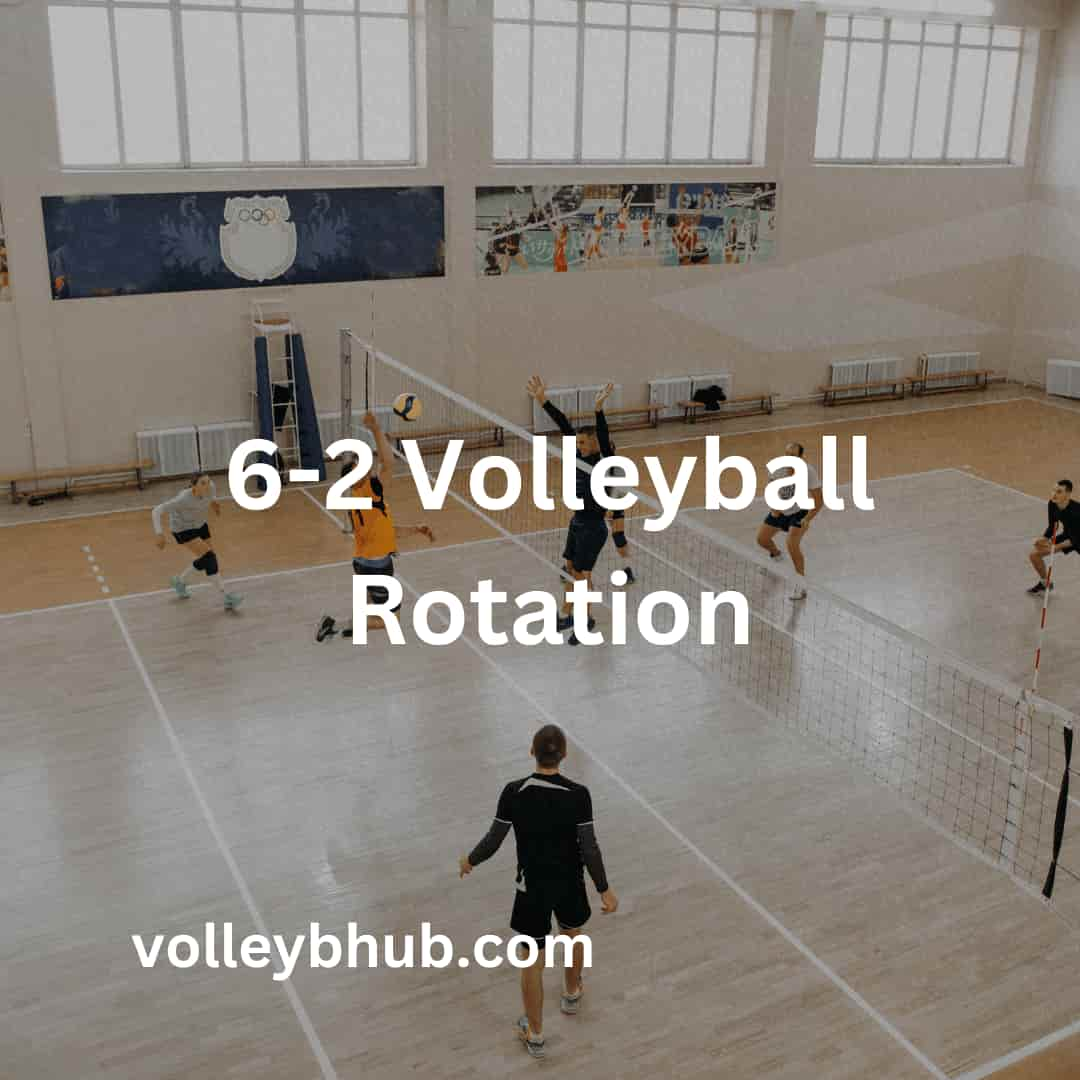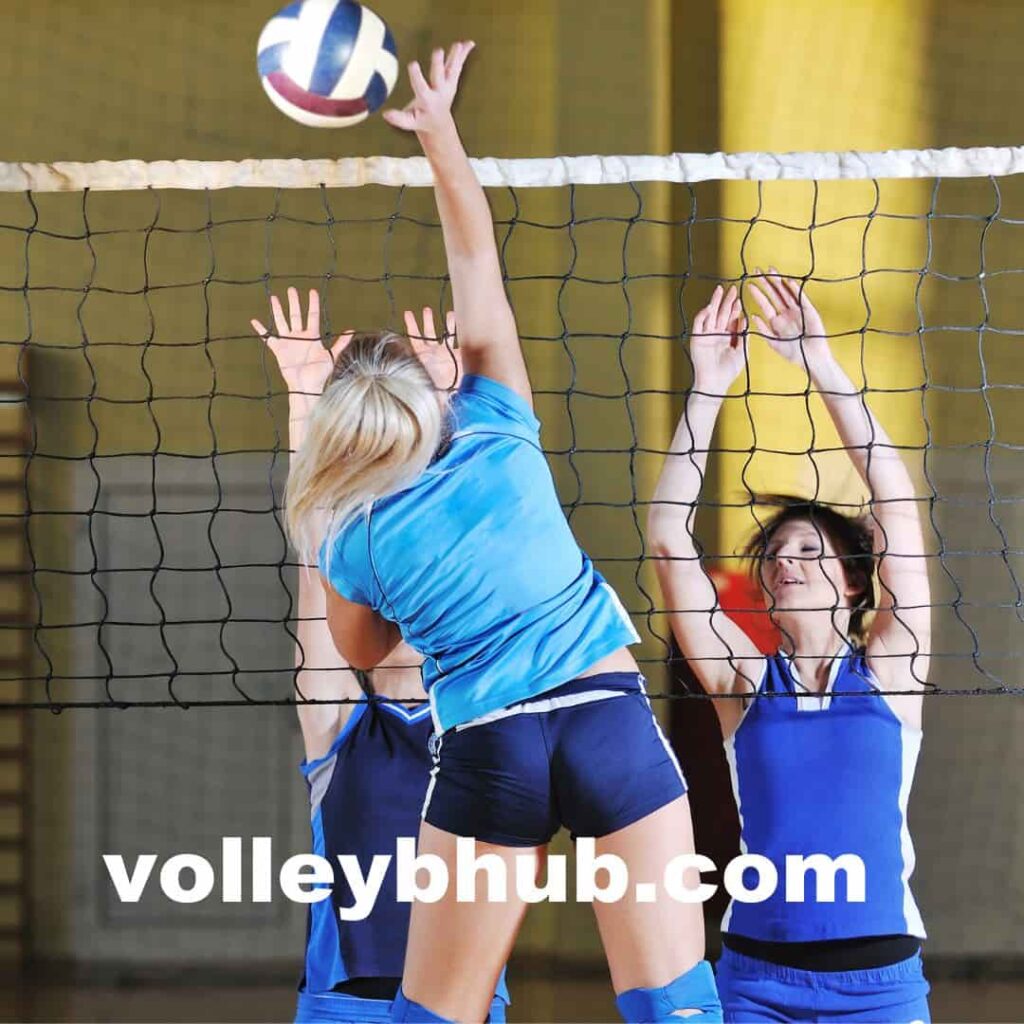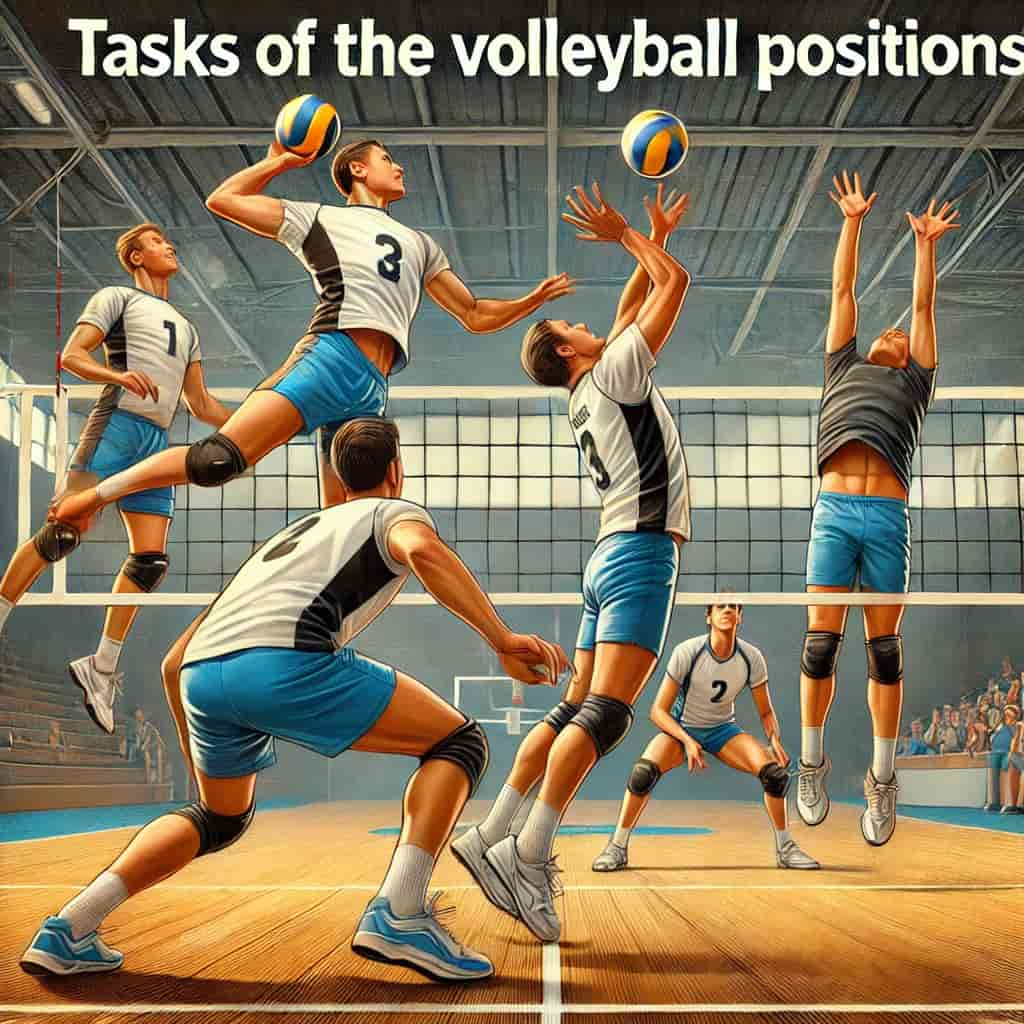
introduction 6-2 Volleyball Rotation
The 6-2 volleyball system is widely used in both collegiate and high school volleyball because of the larger number of substitutions allowed at these levels, as opposed to international volleyball, where only six substitutions are permitted per match. In this system, the first number, 6, refers to the number of hitters on the court, while the second number, 2, indicates the number of setters.
A coach using the 6-2 system always has three hitters/blockers in the front row, giving the team a strategic advantage to counter the opponent’s attack. This formation ensures that at all times, the team has a strong offensive and defensive presence.
To effectively execute a 6-2 system, the team must have at least nine to ten skilled players, including two experienced setters, two middle blockers, two to three passer-hitters, two right-side hitters, and one to two liberos. This setup offers more opportunities for all players to be involved, enhancing their participation in the match and ensuring a competitive edge.
Understanding the 6-2 Volleyball Rotation System
In the 6-2 volleyball rotation, teams designate two setters, one positioned in the front row and the other in the back row. This setup allows for more offensive flexibility, as the front-row setter can move to position two if they excel at blocking.
This gives the team a chance to have three attackers available at all times, increasing offensive options and creating a more dynamic playing style.
The 6-2 system also allows teams to involve more players, leading to greater participation and the opportunity to utilize aggressive tactics. With additional players on the court, teams can maximize their offensive potential while maintaining a balanced rotation.
However, a potential drawback of this system is the higher variability in the quality of sets, which may affect team chemistry. This can be a challenge compared to the 5-1 system, where only one setter is responsible for controlling the flow of the game.
As a result, players need to adapt quickly to different setters and build strong communication to ensure smooth gameplay.

Key Takeaways:
- Two setters are used, one in the front and one in the back row.
- The front-row setter can take on a blocking role at position two if needed.
- Increased player involvement and offensive strategies are advantages of this system.
- Set variability and potential challenges with team chemistry are common concerns compared to the 5-1 system.
The 6-2 volleyball rotation offers a more aggressive and participatory approach, but teams need to ensure proper coordination and communication to make it effective.
Read Also: Unmissable Keystone Volleyball Games [High-Energy Action]
Understanding the 6-2 Volleyball Rotation: A Strategic Breakdown
In volleyball, the 6-2 system is a formation where one player acts as the setter when positioned in the back row, while another player takes on the role of a right-side hitter in the front row. This setup ensures that the setter is always in the back row, providing better court vision and more consistent ball distribution.
The player positioned opposite the setter on the court may rotate into position 2, depending on their blocking abilities. If they excel at blocking, coaches will keep them in position 2 to counter the opponent’s strong outside hitters.

A key feature of the 6-2 system is that the setter and the right-side hitter are always positioned diagonally from each other on the court. This ensures that when one is in the back row, the other is in the front, maintaining a balanced offense.
As the setter rotates into position 4, two substitutions are often required to maintain the system’s effectiveness. These substitutions use up two of the 12 allowed per set for every three rotations.
To successfully run the 6-2 system, a team needs highly skilled setters capable of managing offensive plays. The advantage of having two setters on the court is that it provides different options for attacking and decision-making.
However, finding two or three elite setters can be challenging due to the uneven distribution of talent and the limited focus on setter development at younger levels.
Key Insights:
- The 6-2 system involves a back-row setter and a front-row right-side hitter.
- The player opposite the setter may rotate into position 2 if they are a strong blocker.
- The setter and right-side hitter remain diagonally positioned on the court.
- Substitutions are essential to maintaining this system and must be managed carefully.
- The system requires top-level setters, but finding and developing such talent can be difficult.
The 6-2 volleyball rotation offers strategic advantages with a more flexible offense and decision-making options, but it also demands strong setter performance and thoughtful substitution management to function effectively.
Pros and Cons of the 6-2 Volleyball Rotation
The 6-2 volleyball system offers several advantages and challenges for teams, particularly in how it maximizes player involvement and offensive flexibility. Here’s a breakdown of its strengths and weaknesses.
Key Advantages of the 6-2 System
- Two setters for versatile play: The presence of two setters offers teams two distinct approaches to attacking. This also provides multiple perspectives for decision-making, especially when trying to mislead or fake blockers on the opposing team.
- Consistent front-row hitters: One of the key benefits of the 6-2 system is that it always ensures there are three hitters/blockers in the front row. This consistent offensive strength allows teams to counter their opponents’ attacks more effectively.
- Increased player participation: The 6-2 system typically requires at least nine to ten competitive players, creating more opportunities for athletes to contribute during the game, which boosts overall player engagement and involvement.
- Enhanced blocking strategy: With this system, coaches can position middle blockers in a way that allows them to release quickly for fast first-tempo attacks. This provides more offensive options for pin hitters and opposite players, making the attack more dynamic.

Key Disadvantages of the 6-2 System
- Challenge in finding top setters: A major drawback is the difficulty in finding two or three highly skilled setters within a team. The distribution of talent often makes it hard to develop multiple setters at a high level, especially when setter training is neglected at younger ages.
- High substitution usage: When the setter rotates into position 4, coaches must make two substitutions. This can quickly consume the team’s 12 available substitutions, especially since two substitutions are needed every three rotations.
- Shorter setters: Setters are often shorter than other players due to specialization. This height disadvantage can make blocking and reaching high balls more challenging, potentially impacting the team’s defense.
Conclusion
The 6-2 volleyball rotation offers tactical benefits, including versatile attack options and increased player participation, making it an attractive system for teams with deep rosters.
However, it requires highly skilled setters and careful substitution management, and the physical limitations of setters can sometimes pose challenges. For teams that can address these issues, the 6-2 system provides a strong framework for both offensive and defensive success.
FAQ’s: 6-2 Volleyball Rotation
What are two disadvantages of the 6-2 rotation?
Two disadvantages of the 6-2 rotation include the difficulty of finding two highly skilled setters, which can impact team performance, and the high number of substitutions required, which can deplete the team’s substitution limit more quickly.
What is the 6 rotation player in volleyball?
A 6-rotation player in volleyball is an athlete who plays in both the front row and back row throughout the entire game, contributing to both offense and defense without being substituted.
What is the difference between a 5-1 and a 6-2?
The key difference between a 5-1 and a 6-2 system is that in a 5-1 system, there is only one setter for the entire rotation, while in a 6-2 system, there are two setters who alternate between front row and back row, giving the team three front-row hitters at all times.





